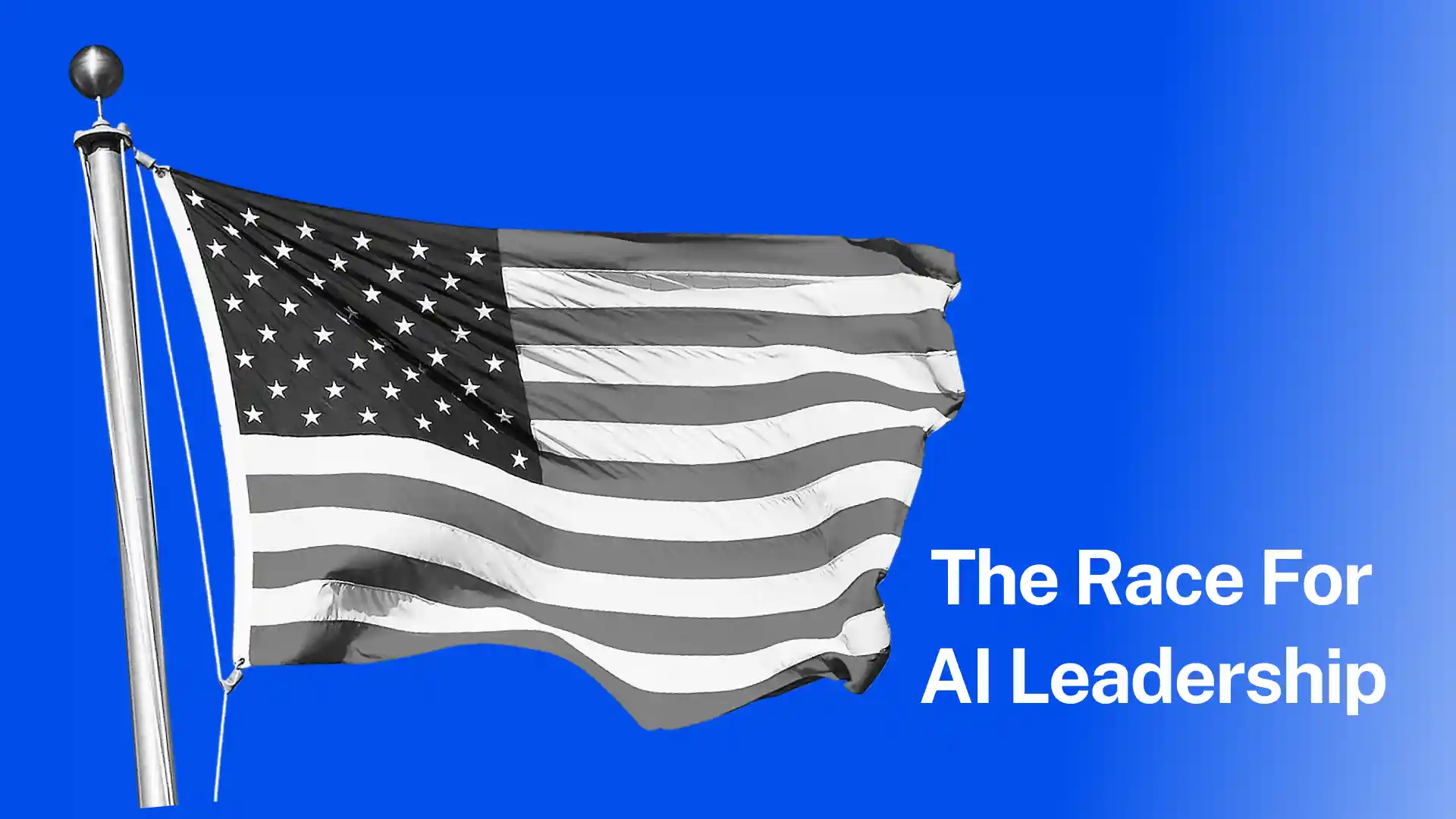

This week: Trump’s AI Action Plan
A bold new era begins. Trump’s sweeping AI roadmap replaces regulation with acceleration, favoring infrastructure buildout, workforce retraining, and “neutral” models in federal use. While industry cheers the momentum, legal experts raise concerns over vague neutrality rules and politicized compliance.
We also dive into:
- AI Starts With Messy Files: Phil Kirschner on how McKesson unlocked value from fragmented data using agents, not clean dashboards
- Zoom Reinvents the Office Model: Brian Elliott on turning offices into outcome-led engagement hubs with anchor days and experience orchestration
- Walmart Launches Four Super Agents: A deep look at Walmart’s unified AI tools that serve shoppers, sellers, staff, and developers
- Delegation Reveals Time and ROI: HBR on how a two-week task audit can unlock 20 strategic hours per month
- Skills Lag Despite Urgency: Gallup finds that time isn’t the real barrier to learning; manager support is
Let’s get into it 👇
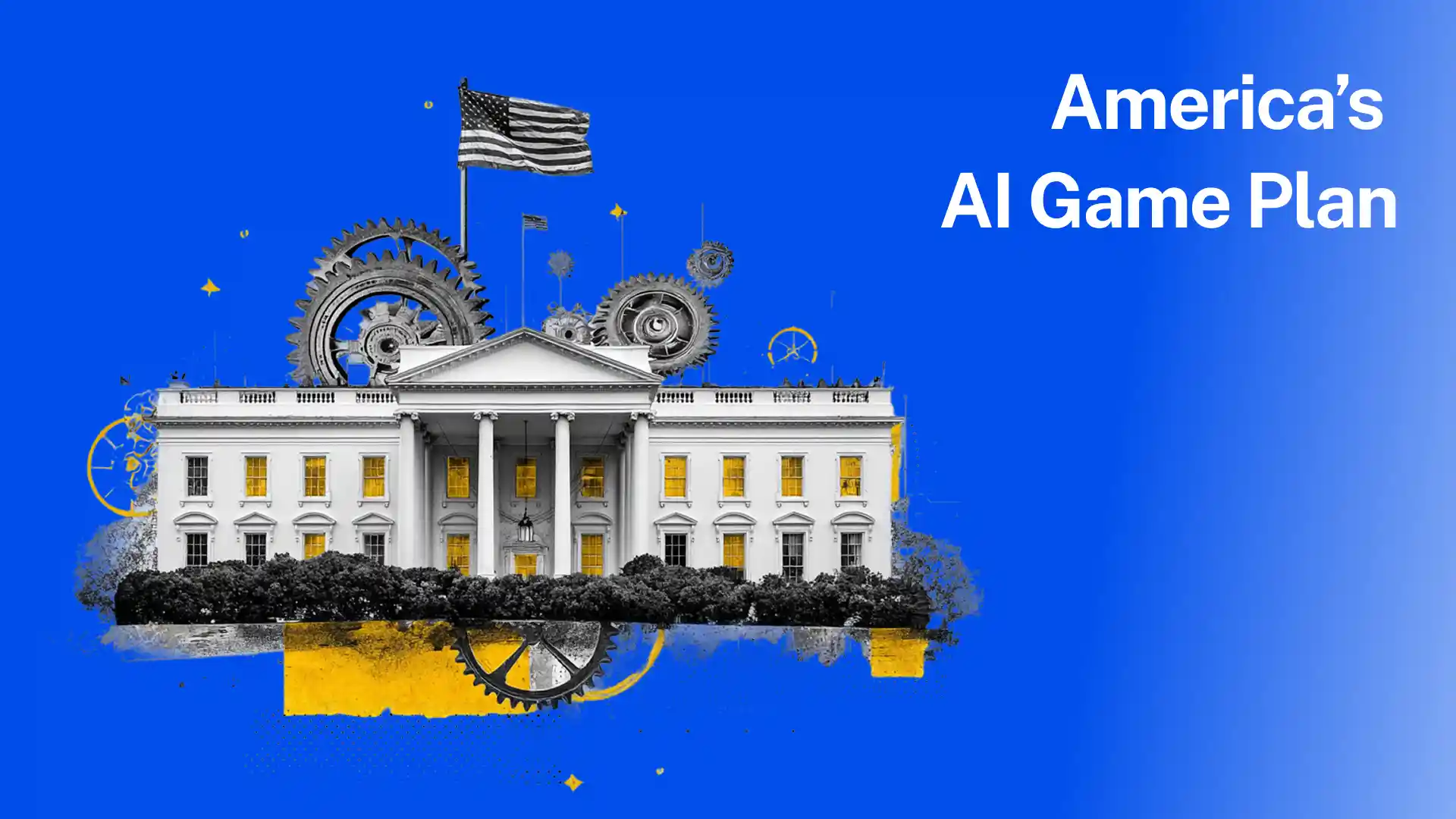
On July 23, the White House unveiled America’s AI Action Plan — a sweeping, high-stakes roadmap designed to secure U.S. dominance in artificial intelligence. Framed as the next space race, the plan includes 90+ federal policy actions, three executive orders, and a clear mandate: deregulate, build fast, and lead globally.
The strategy tears down guardrails on innovation, removing Biden-era AI regulations and empowering agencies to bypass state laws that slow deployment. It fast-tracks infrastructure like data centers and semiconductor fabs, offering access to federal land and streamlined permits through tools like FAST-41 and NEPA exclusions.
But that’s not all. A controversial executive order now bans “woke AI” in federal contracts, requiring vendors to remove DEI, climate, and misinformation terms — and prove model neutrality. Meanwhile, two other orders expand AI training programs, tax incentives, and apprenticeships to future-proof the American workforce.
Global influence is also central. The U.S. will push allies to adopt American-built AI stacks while restricting adversaries like China from accessing compute, chips, or models aligned with authoritarian values.
The implications are immediate. Leaders at companies like Nvidia, Amazon, and OpenAI are already responding. HR leaders, tech vendors, and strategy teams will need to move fast to align with new compliance, infrastructure, and workforce requirements.
Your Friday Briefing on the Future of Work
Future Work delivers research-backed insights, expert takes, and practical prompts—helping you and your team capture what matters, build critical skills, and grow into a future-ready force.
Get all-in-one coverage of AI, leadership, middle management, upskilling, DEI, geopolitics, and more.
Unsubscribe anytime. No spam guaranteed.
🛠️ The Top HR and L&D Challenges eLearning Can Solve
While businesses place increasing demands on their team’s competencies, employees, in turn, raise expectations of the companies they work for. This leads to numerous challenges for HR and L&D departments.
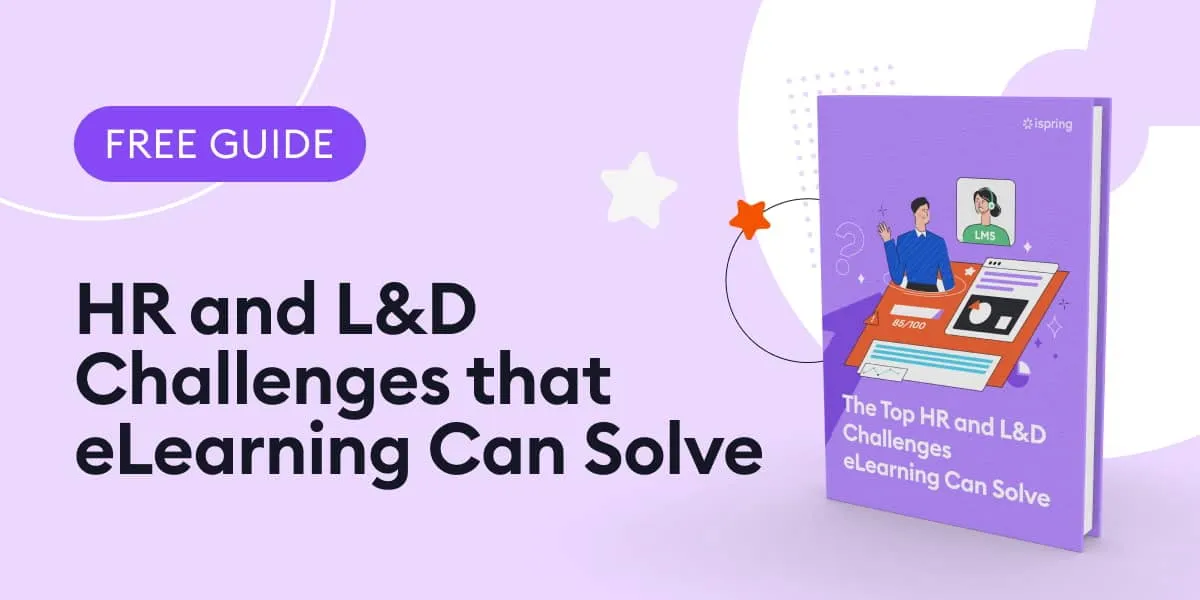
Fortunately, most of them you can resolve with eLearning. Download a free expert guide, The Top HR and L&D Challenges eLearning Can Solve, to explore how ongoing learning opportunities can help you:
- ✅ Launch effective new hire onboarding that enhances employee loyalty and overall HR brand
- ✅ Build training materials that promote better training completion rates and knowledge recall
- ✅ Foster a learning culture to make training a habit rather than a tedious routine
- ✅ Conduct smart training needs assessments and calculate their ROI
- ✅ Avoid information and resource silos and enhance knowledge management within your company
I keep a close eye on what our Future Work Experts are thinking, saying, and questioning. I break down the key conversations and brainstorm practical steps we can take to move forward.
This week:
AGENTIC ADOPTION
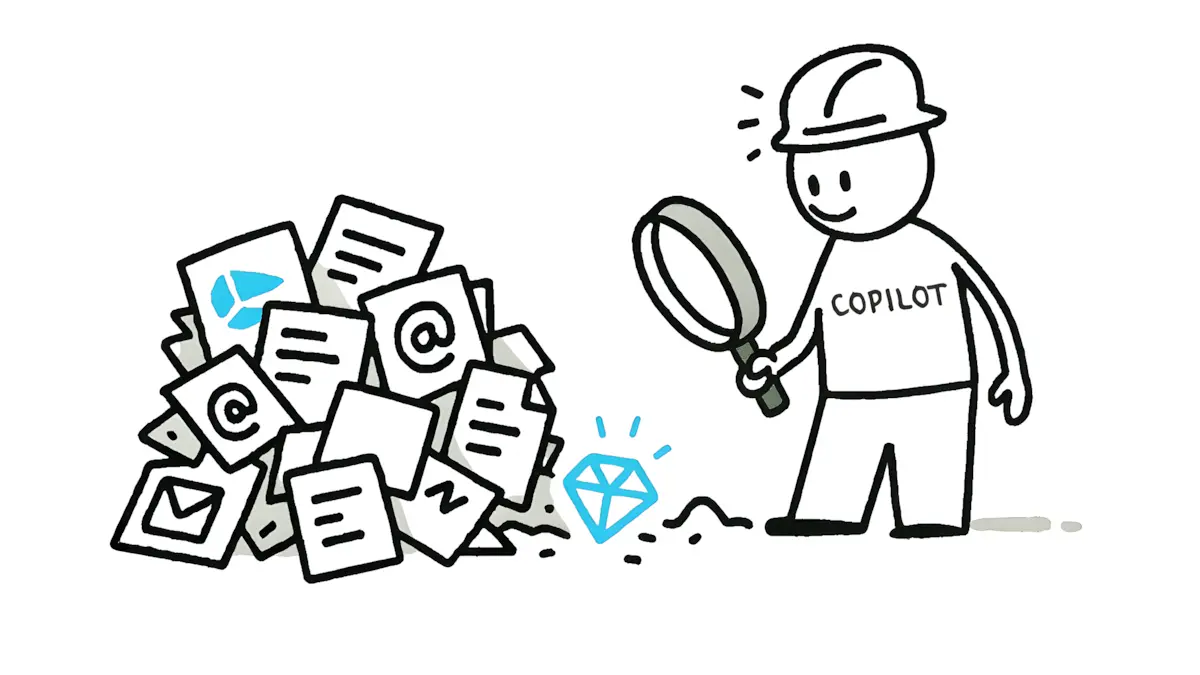
Phil Kirschner: McKesson’s Bottom-Up AI Breakthrough
- Start with the messy reality: McKesson’s Corporate Real Estate (CRE) team used AI agents to extract insights from PowerPoints, spreadsheets, and fragmented docs, accepting that real business data rarely lives in dashboards.
- Tech isn’t the blocker—leadership is: Executive support, plus embedded technologist Drew DePriest, enabled real experimentation even without clean data or full tools.
- Shift from support to self-service: Instead of big systems, the team launched with FAQs and “top 10” pain points to build a search-first habit with minimal resistance.
📝 Prompt: What messy-but-meaningful data sources does your team rely on? Try using an agent to extract insights from just one this week.
👉 Read the full story on bottom-up AI adoption in CRE
🎥 Replay Now: AI Rollouts, Resistance, and Change Management.
WORKPLACE STRATEGY
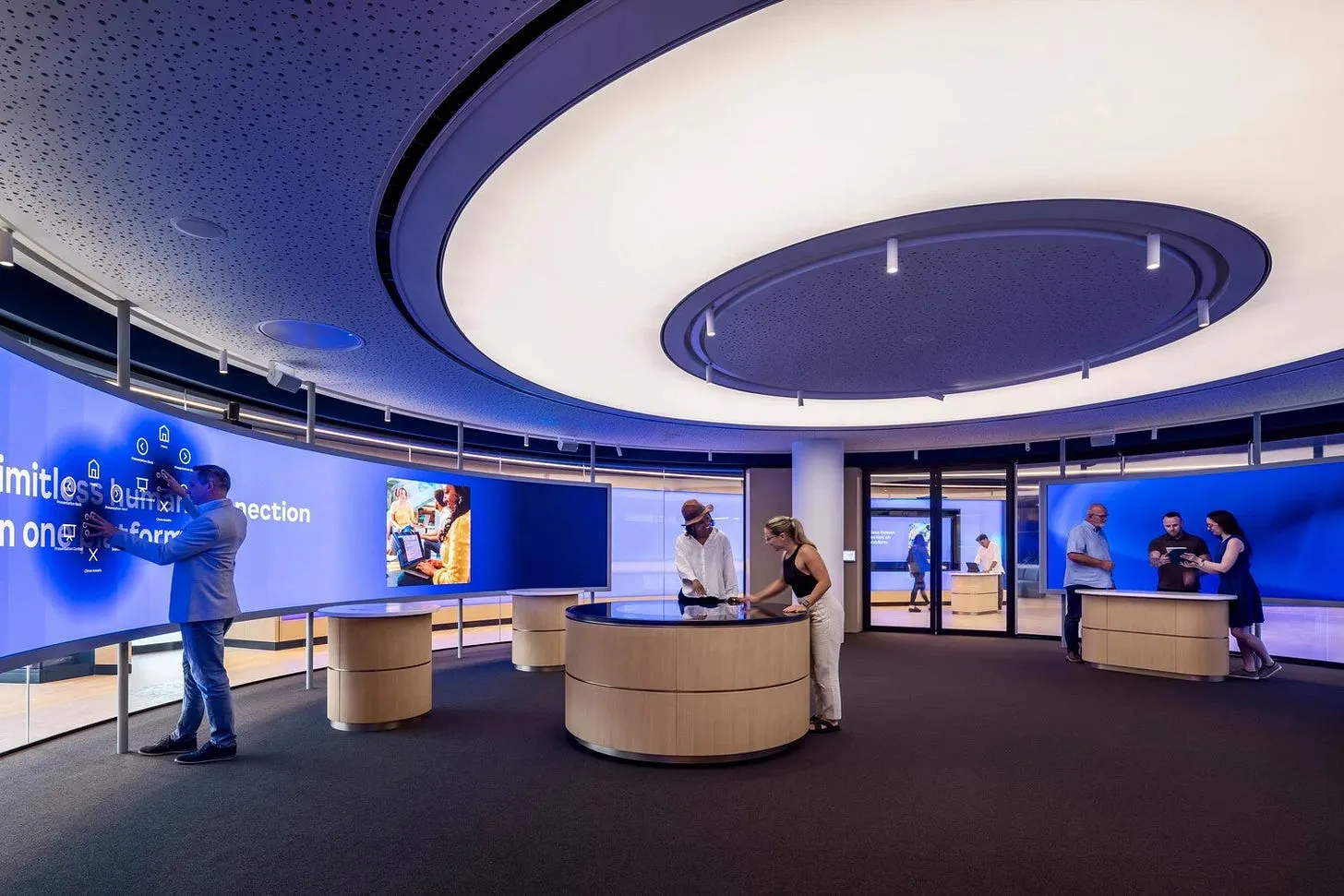
Brian Elliott: Zoom’s Workplace Revolution
- From Offices to Engagement Hubs: Under Izabella Lorenz, Zoom shifted from traditional offices to purpose-led spaces (e.g. engagement hubs, experience centers) designed for both employees and customers, emphasizing outcome-driven design over occupancy.
- Structured Hybrid Strategy: Instead of flexible chaos, Zoom implemented function-based anchor days and clear "whys" (like onboarding, collaboration, customer connection) to reduce coordination tax and boost in-person effectiveness.
- Experience Orchestration at Scale: With just 18 people supporting 9,000 employees, Lorenz’s team evolved from facilities management to experience enablement, building playbooks, self-service tools, and feedback loops to empower hybrid work.
📝 Prompt: Review your office strategy. Can your space clearly answer: What is this for, and who does it serve? If not, rewrite the intent—and test it with your team.
STRATEGIC HR SHIFT
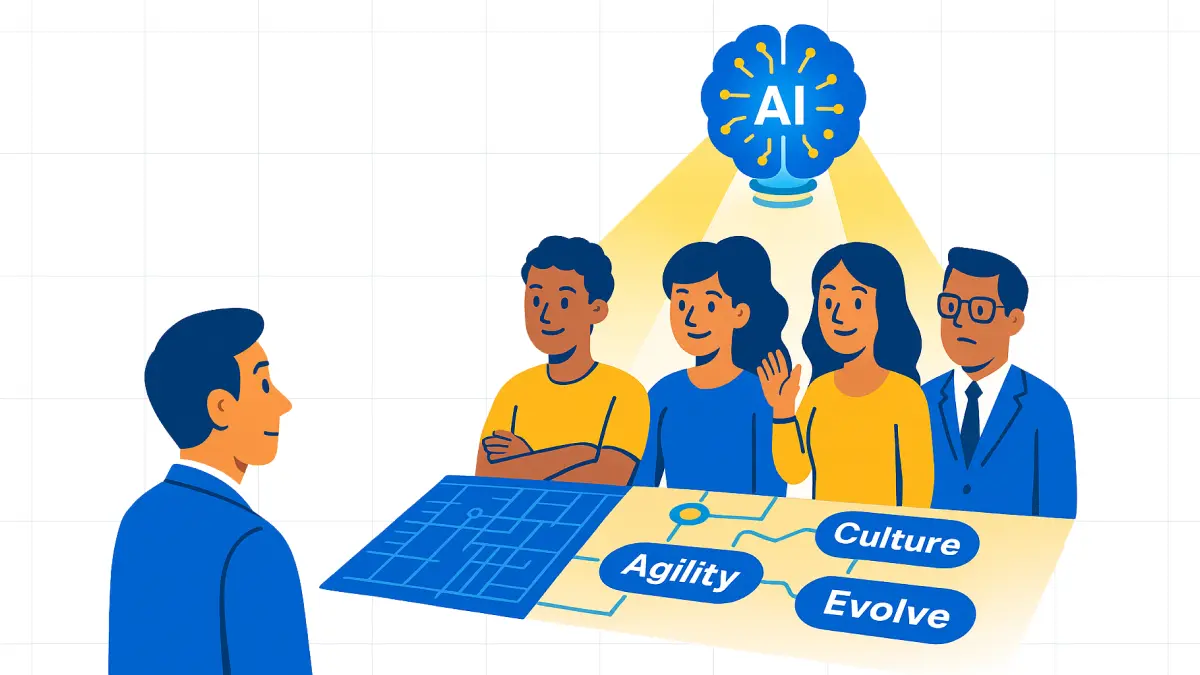
Anthony Onesto: AI’s Hidden People Strategy
- AI companies like OpenAI and Anthropic are scaling HR headcount as fast as engineering, treating people ops as a core business driver, not back-office support.
- A new HR archetype is emerging: fluent in AI tools, data, and org psychology, designed for hyper-growth and strategic agility.
- These HR leaders are crossing into every industry—bringing AI-native talent strategies to companies like Red Bull, Robinhood, and AECOM.
📝 Prompt: Ask your HR partner: “What’s one practice from AI companies we could try this quarter to improve how we hire or retain top talent?”
👉 Read how your next HR hire could be your most strategic one yet.
🔥 QUICK HITS:
(AI & POLITICAL ECONOMY) Matt Stoller: AI Isn’t Taking Jobs—Capital Is
- The fear of mass job loss from AI ignores deeper economic design choices: it’s not just technology replacing workers—it’s return-on-capital incentives that suppress wages, reduce hiring, and centralize power.
- The real displacement force is monopoly behavior and policy inertia, not just engineering breakthroughs; AI becomes a convenient excuse for pre-existing exploitation, from copyright theft to customer service erosion.
- From David Baldacci’s IP being scraped to Hertz's AI-driven overcharging, the problem isn’t AI alone; it’s how tech is weaponized in a deregulated, winner-takes-all market.
📝 Prompt: Don’t ask “Will AI take jobs?”—ask “Who benefits from the productivity it creates?” Then assess if your systems are redistributing that value fairly across teams, creatives, and users.
(SKILL-POWERED ORGANIZATION) David Green: Building a Skills-Powered Organisation at Arcadis
- Business-led from the start: Arcadis tied skills transformation to real business problems—global talent access, retention, not HR theory. Business leaders pitched the vision to execs and drove strategy.
- Deep governance, human-centered design: Treated SPO as culture change, not tech rollout—built cross-functional governance (SteerCo, change champions), invested in co-creation and change management.
- Equity and global readiness built in: With 36,000 employees in 30+ countries, embedded data ethics, privacy, and inclusivity from day one. Already seeing ROI through faster hiring, internal mobility.
📝 Prompt: Map real business pain points (e.g. talent gaps, career visibility, client delivery). Frame skills as the solution. Build a light business case, test it with cross-functional teams, and have business leaders pitch it to execs.
🎧 Listen to the podcast to find out how Arcadis turned strategy into action.
(AI OPS LEADERSHIP) Your AI Tools Aren’t the Problem
- Companies are overspending on AI tools but underinvesting in human enablers, creating a widening AI implementation gap between tools and real ROI.
- Enter the AI Operations Lead: a hybrid role blending prompt engineering, workflow automation, and change management, acting as a translator between AI strategy and team execution.
- With roles like The Detective, The Coach, The Gatekeeper, this new function is critical to building AI-native cultures and turning software into real productivity gains.
📝 Prompt: Instead of asking “Which AI tool should we buy next?”, ask: “Who’s responsible for unlocking ROI from what we already have?”
👉 Your next competitive advantage might be a job title, not a product.
I track what’s worth your attention—bringing you the news and updates that matter most to how we work, lead, and grow.
This week:
AGENTIC AI IMPLEMENTATION
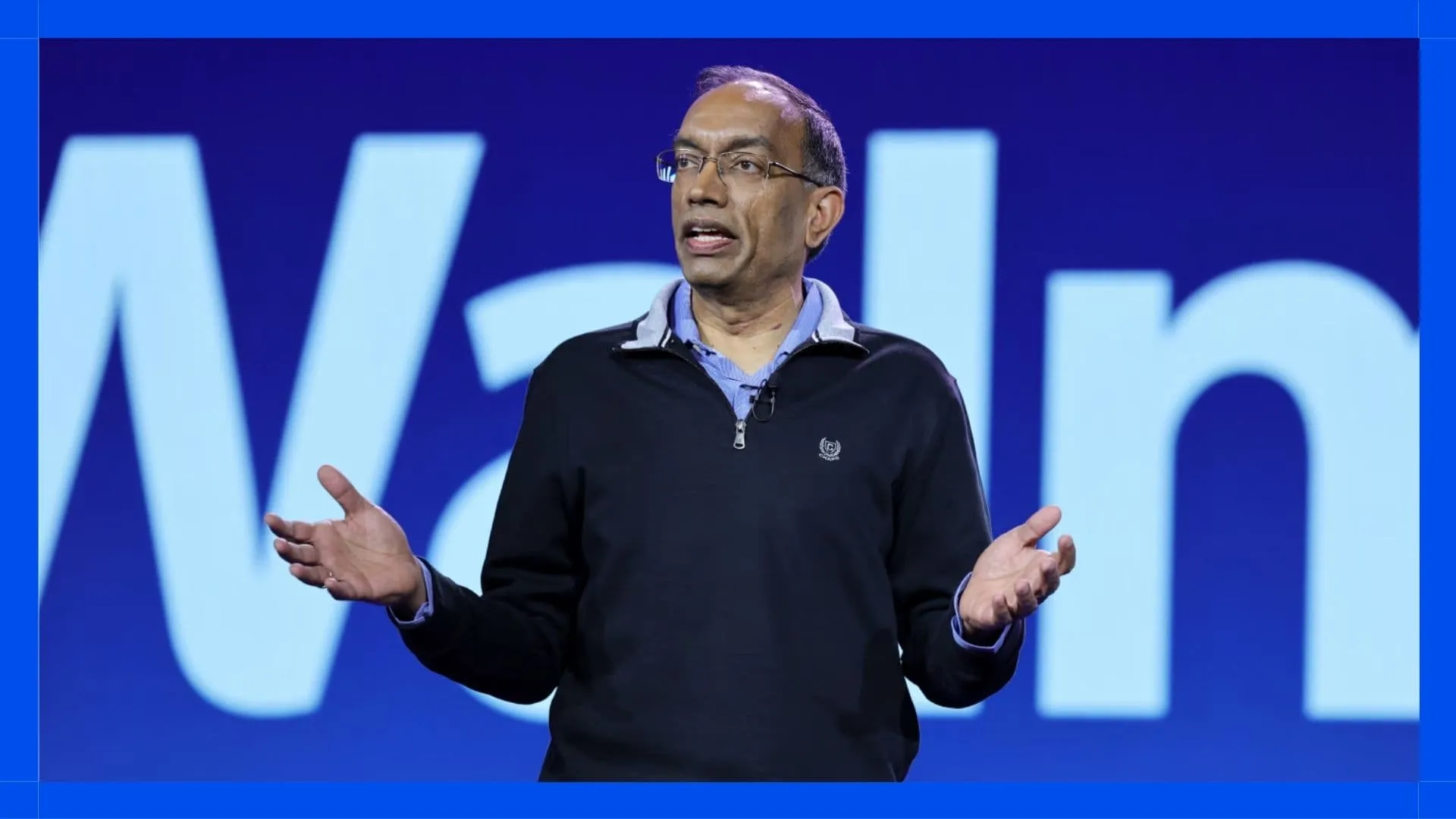
Walmart’s Big Bet on Agentic AI
Walmart is going “all in” on agentic AI with a sweeping overhaul of its internal and customer-facing tools, introducing four unified “super agents” to replace dozens of scattered systems. These include:
- Sparky for shoppers, offering smart reordering, party planning, and fridge-based recommendations via computer vision
- Associate Agent for employees, handling tasks like leave applications and real-time sales data
- Marty for sellers and advertisers, streamlining onboarding, orders, and ad campaigns
- Developer Agent for engineers building future tools
The initiative aims to simplify experiences, reduce friction across systems, and boost adoption by centralizing AI interactions under one interface per group. The new agents leverage Model Context Protocol (MCP) to coordinate multiple smaller tools behind the scenes. Walmart’s goal: make AI drive 50% of sales within 5 years by enhancing personalization, speed, and supply chain efficiency.
🛠️ Leadership-focused:
- (Fortune) Walmart’s AI agents are already streamlining corporate and frontline work, but execs admit the job impact is still unclear—leaders should prepare teams for evolving roles rather than outright replacement.
- (WSJ) With dozens of scattered tools consolidated into four “super agents,” managers now face a new responsibility: guiding their teams through a unified AI interface and modeling adoption themselves.
- (Reuters) AI agents like Sparky and Marty will automate decisions in shopping, inventory, and HR; Walmart says this won’t cut jobs outright, but managers must help employees transition to new, AI-enabled tasks.
SMART DELEGATION

HBR: The ROI of Letting Go
- Most leaders delegate too little: Many keep low-ROI tasks by default, not by strategy. A two-week time log reveals hidden patterns in how leaders actually spend their time.
- 4-category method: Tasks fall into should delegate, could delegate, should not delegate, or automate/eliminate—clarifying what to shift and what to keep.
- The payoff is real: Delegating 20 hours/month can unlock strategic time. One leader even used the time log ROI to justify development investments with compensation math.
📝 Prompt: Track your next 3 workdays in 15-minute blocks. Then pick one “should delegate” task and hand it off—this week. Don’t wait for perfect prep. Just move.
INNOVATION BARRIERS

MIT: Why Innovation Gets Stuck
- Innovation threatens power and identity: Internal politics, legacy systems, and fear of role loss can stop good ideas before they surface, especially when innovation shifts power or status.
- Status quo bias is real: Most people resist unfamiliar tools or changes; leaders must normalize experimentation and create low-risk spaces to “play” with the new.
- Change must feel like continuity: Framing transformation as a continuation of core identity—rather than its replacement—can ease psychological resistance and preserve purpose.
📝 Prompt: At your next team meeting, ask: “What feels at risk—personally or professionally—if we pursue this innovation?” Then reframe the change as a continuation of what matters most.
MENTORSHIP PHILOSOPHY

Brad Feld: Give First, Grow Later
- "Give First" isn’t charity—it’s strategy: Brad Feld urges leaders to contribute energy to systems before expecting returns. It’s about shaping networks with trust, not transactions.
- Presence + randomness = impact: Feld’s best work (like Techstars) came from Random Days—unplanned 15-minute meetings that surfaced serendipitous partnerships.
- Better > more: Rejecting the growth-at-all-costs mindset, Feld champions sustainable ecosystems and mutual mentorship where both parties evolve, not extract.
📝 Prompt: Pick one person you can mentor with no strings attached. Offer 30 minutes this month to share, listen, and learn together. Track what grows from it, not who owes you.
EMPLOYEE UPSKILLING
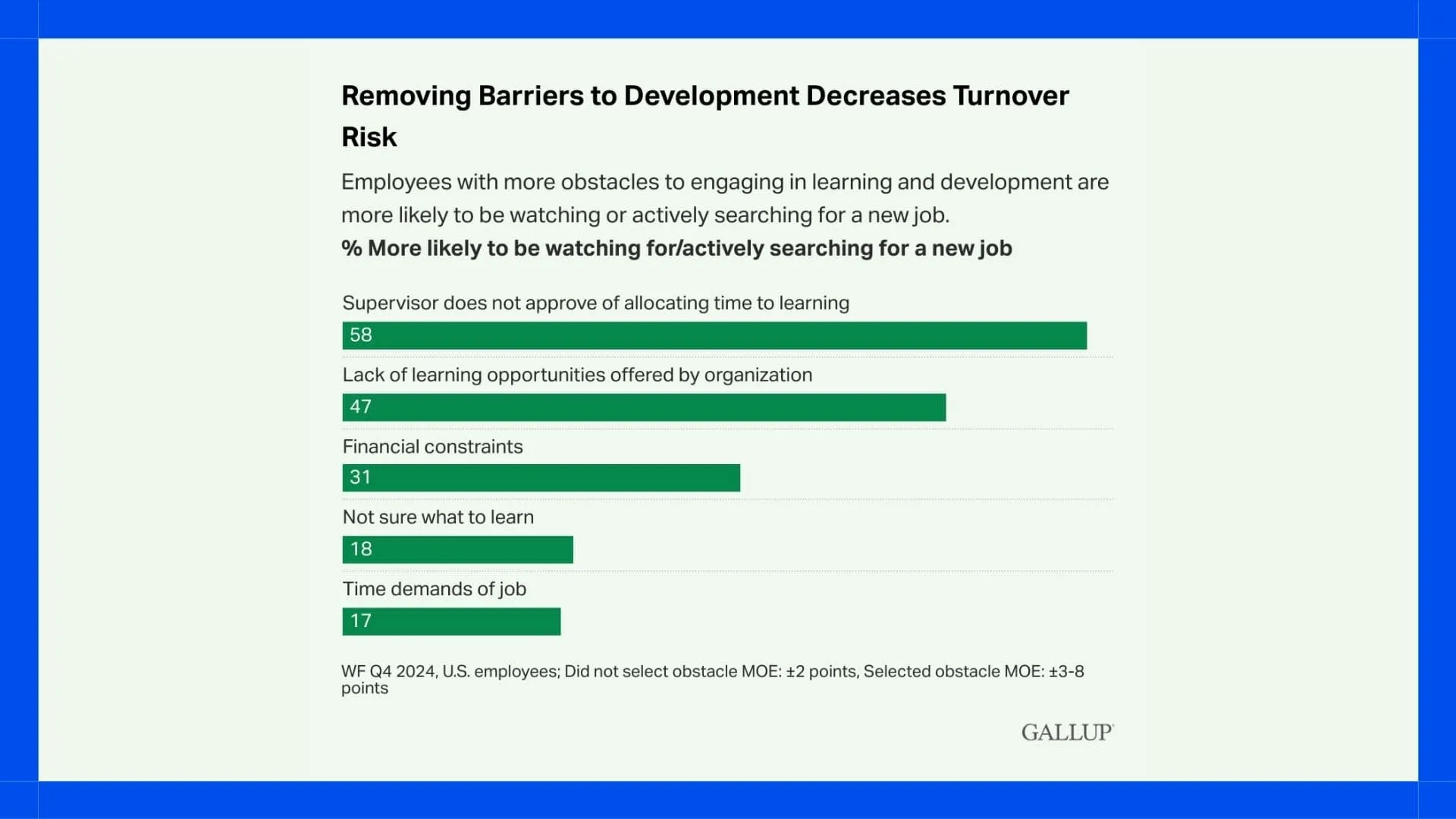
Gallup: Why Skill Growth Still Stalls
- Skill needs are shifting fast: 32% of job skills changed from 2021–2024 (Lightcast), but only 45% of U.S. employees engaged in job-related learning in 2024.
- Time isn’t the only blocker: While 89% of CHROs cite time as the top barrier, lack of manager support is the strongest predictor of turnover intent.
- Training doesn’t match needs: Most completed courses focus on compliance, but employees and leaders alike crave leadership and technical skill development.
📝 Prompt: This week, skip the audit, ask each team member what skill they want to grow next. Then block 2 hours during work time for them to pursue it, no strings attached.
🔥 QUICK READ:
- Canada Pushes Back on Trump’s Tariffs: As Trump threatens sweeping tariffs—including a 35% tax on Canadian imports by August 1—PM Mark Carney says Canada “won’t accept a bad deal” just to make peace. While short-term pain looms (a projected 2.1% GDP hit), Canada is fighting back with countermeasures, sector support, and a grassroots Buy Canadian movement. Long-term, the trade war is accelerating Canada’s economic pivot: tearing down internal trade barriers, diversifying exports, and reducing dependence on an unpredictable U.S. partner.
- $1B in Nvidia Chips Smuggled into China: Despite U.S. bans, China has reportedly imported over $1B in Nvidia’s advanced chips via black market channels, with sellers openly advertising on social media. Some racks with B200 chips sell for up to $489K—50% above U.S. prices—and may have passed through Southeast Asia. Nvidia downplays the impact, but rising demand and illicit supply chains raise pressure on export controls and global tech enforcement.
Your Friday Briefing on the Future of Work
Future Work delivers research-backed insights, expert takes, and practical prompts—helping you and your team capture what matters, build critical skills, and grow into a future-ready force.
Get all-in-one coverage of AI, leadership, middle management, upskilling, DEI, geopolitics, and more.
Unsubscribe anytime. No spam guaranteed.

